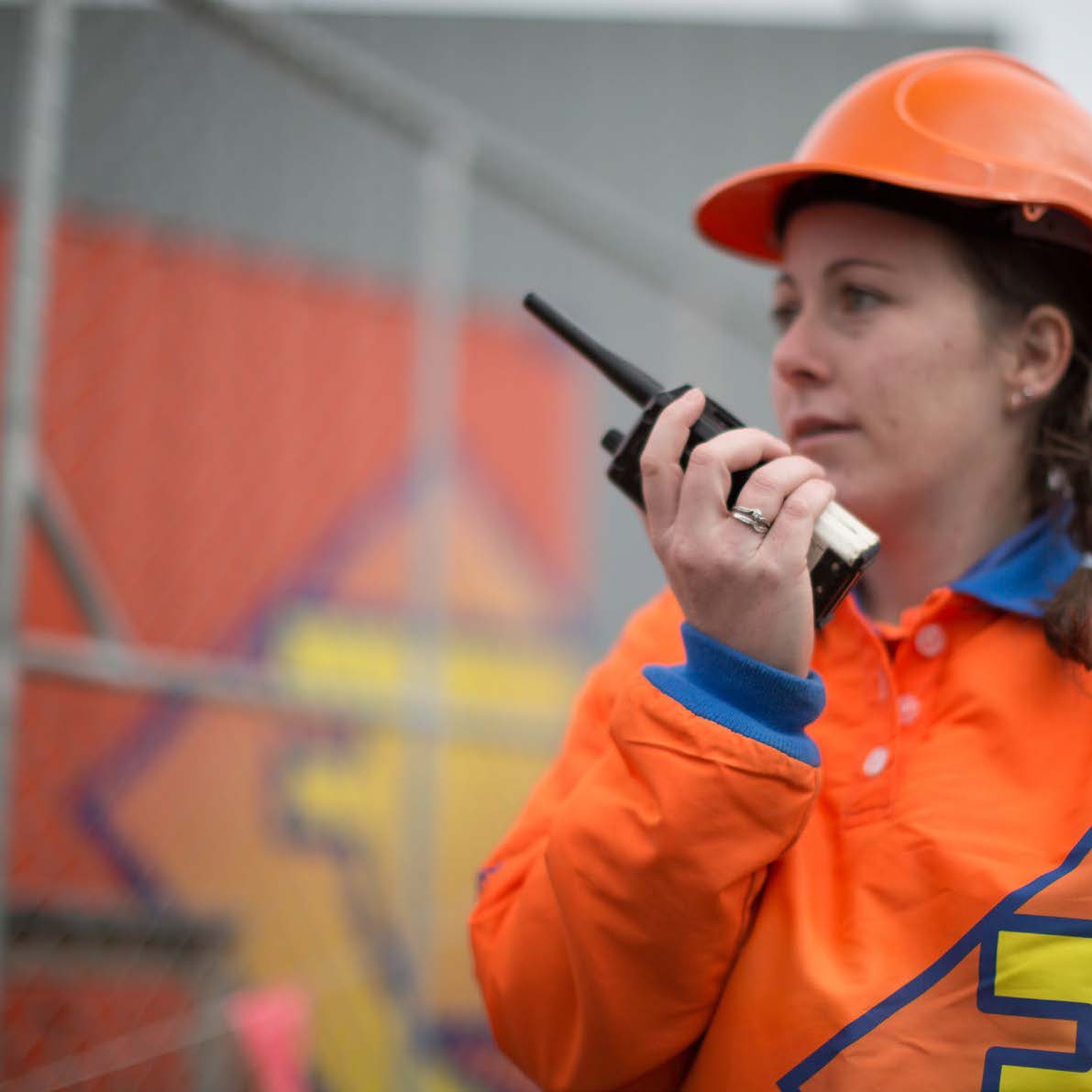
Discrimination resources
Everybody has the right to be treated fairly in the workplace, without discrimination, harassment or bullying.

All organizations have an obligation to ensure that their employees, and those that seek employment with them are treated equally. This is set out in federal and state anti-discrimination laws and the Fair Work Act (2009).
- Harassment, discrimination and bullying in the work place
- Everyone has the right not to be harassed or bullied at work.
- Employers need to prevent discrimination, bullying and harassment from occurring in the workplace.
Federal discrimination laws protect people from discrimination of the basis of their:
- race, including colour, national or ethnic origin or immigrant status
- sex, pregnancy or marital status and breastfeeding
- age
- disability, or
- sexual orientation, gender identity and intersex status.
Under discrimination law, it is unlawful to treat a person less favourably on the basis of particular protected attributes such as a person’s sex, race, disability or age. Treating a person less favourably can include harassing or bullying a person. The law also has specific provisions relating to sexual harassment, racial hatred and disability harassment.
Sexual Harassment in the Workplace
The Sex Discrimination Act 1984 prohibits harassment in the workplace by employers, co-workers and other “workplace participants”, such as partners, commission agents and contract workers. Sexual harassment is broadly defined as unwelcome sexual conduct that a reasonable person would anticipate would offend, humiliate or intimidate the person harassed.
Respect@Work the Australian Human Rights Commission’s report of The National Inquiry into Sexual Harassment in Australia Workplaces 2020. The report outlines specific behaviours that are likely to constitute sexual harassment under the Sex Discrimination Act 1984 (Cth).
These specific behaviours are:
- inappropriate physical contact including unwelcome touching, hugging, cornering or kissing
- inappropriate staring or leering that causes intimidation
- sexual gestures, indecent exposure or inappropriate display of the body
- sexually suggestive comments or jokes that offend
- sexually explicit pictures, posters or gifts that offend
- repeated or inappropriate invitations to go out on dates
- intrusive questions about a person’s private life or physical appearance that offend
- being followed or watched or having someone loitering nearby
- requests or pressure for sex or other sexual acts
- actual or attempted rape or sexual assault
- indecent phone calls, including leaving sexually explicit messages on voicemail or an answering machine
- sexually explicit comments made in emails, SMS messages or on social media
- repeated or inappropriate advances on email, social networking websites or internet chat rooms
- sharing or threatening to share intimate images or film of without consent
- any unwelcome conduct of a sexual nature that occurs online or via some form of technology.
Bullying in the workplace
The Fair Work Amendment Act 2013 defines workplace bullying as repeated unreasonable behaviour by an individual towards a worker which creates a risk to health and safety.
Bullying at work happens when:
- a person or group of people repeatedly act unreasonably toward a worker or a group of workers
- the behaviour creates a risk to health and safety
Bullying behaviour can range from obvious verbal or physical assault to subtle or surreptitious psychological abuse.
It can include:
- physical or verbal abuse
- yelling, screaming or offensive language
- excluding or isolating employees
- psychological harassment
- intimidation
- deliberately changed work rosters to inconvenience particular employees
- assigning meaningless tasks unrelated to the job
- giving employees impossible jobs
- undermining work performance by deliberately withholding information vital for effective work performance
Employers should also be proactive in addressing hostile behaviour that may be embedded in the workplace culture. Examples of a potentially hostile working environment are where racially or sexually crude conversations, innuendo or offensive jokes are part of the accepted culture. An employee can complain about such conduct as harassment even if the conduct in question was not specifically targeted at him or her.
Under occupational health and safety legislation, employers and employees are required to comply with any measures that promote health and safety in the workplace. Because of this duty, employers need to eliminate or reduce the risks to employees' health and safety caused by workplace bullying.
The Fair Work Ombudsman can receive complaints from workers who believed they have been bullied at work. Further information is available at www.fairwork.gov.au/complaints.
What is unlikely to constitute bullying, harassment or discrimination
Legitimate comment and advice, including relevant negative feedback, from managers and supervisors on the work performance or work-related behaviour of an individual or group should not be confused with bullying, harassment or discrimination.
Reasonable Management action that is carried out in a reasonable way is not bullying.
An employer or manager can:
- Make decisions about poor performance
- Take disciplinary action
- Direct and control the way work is carried out.

Understand your options:
If you feel you have been subjected to harassment or bullying below are some of the options you could consider:
Check your workplace policy
Your workplace might have a policy that sets out steps you can take, for example a Sexual Harassment Policy, an Equal Employment Opportunity Policy or a Grievance/Complaints Policy. You might have received a copy of these policies during induction, you might be able to access these on your employer’s intranet or they might be available through human resources.
If not, or in addition, you might like to think about taking one of more of the steps below.
Talk to the other person
You could try to tell the person that their conduct is unwanted or makes you feel uncomfortable and request them to stop. This can result in the ending of the conduct because individuals sometimes lack awareness of their behaviours until they are brought to their attention.
Seek assistance
You could consider talking to a human resources officer or manager at your workplace if you do not feel comfortable talking directly with the individual or people involved.This should result in the manager or human resource officer discussing your options with you further. If you want to keep your complaint confidential you need to mention this.
The human resource officer or manager may be able to communicate directly to the individual who has engaged in harassment or may recommend that you escalate the matter to a more formal level.
Note that if sexual abuse is of a very serious nature, the person you talk to may have a duty of care to report it to upper executive levels to protect your occupational health and safety.
Make a formal complaint at work
If talking to the individual/s involved in the harassment or bullying does not work then you could make a formal complaint about the behaviour within your workplace.
In the case your workplace does not have policies or information in place on how to do this, it is best to put your complaint in writing and only provide it to a human resource officer or manager. You should provide as much details as you can about the behaviour including who was involved, when it occurred and who else might have seen or heard it. If you have documents or copies of documents that contain harassing material such as emails, pictures or screen shots, this should be included.
A formal complaint made to your workplace should result in an investigation of the matter including getting the person that has harassed or bullied you to tell their side of events. Once an investigation is complete your employer has to decide what to do and this might include ending the engagement of the person who sexually harassed you, moving them to another location or giving them a warning.
Lodge a claim with an external body
You can make a sexual harassment claim under discrimination legislation to one of the organisations listed below. Visit their website or contact them directly to work out how to lodge a claim.
Women Building Australia has set up a Harassment and Discrimination Helpline where you can get practical (non-legal) advice if you feel you have been subjected to either bullying or harassment in the workplace.

